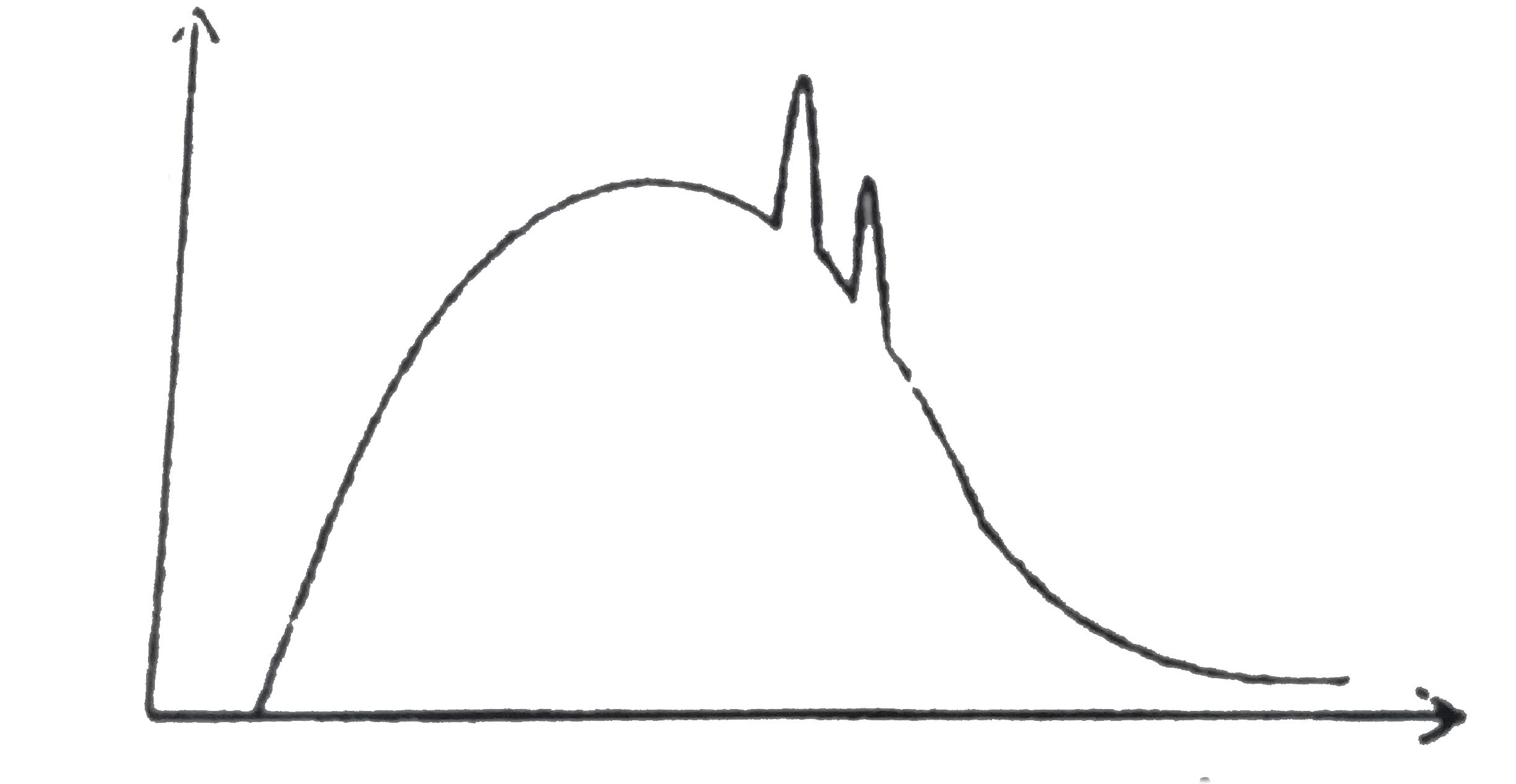
A beam of electrons striking a cooper target produces X-rays. Its spectrum is as shown. Keeping the voltage same if the copper target is replaced with a different metal, the cut-off wavelength and characteristic lines of the new spectrum will change in comparison with old as:
cut-off wavelength will remain unchanged while characteristic lines will be different.
Both cut-off wavelength and characteristic lines will remain unchanged.
Both Cut-off wavelength and characteristic lines will be different
Cut-off wavelength will be different while characteristic lines will remain unchanged
The correct Answer is:A
Cut-off wave length depend on accelerating voltage and characteristic wavelength depends on nature of the target material.
Topper's Solved these Questions
- ATOMIC PHYSICSBOOK - NARAYNACHAPTER - ATOMIC PHYSICSEXERCISE - LEVEL-I (H.W)
22 Videos
- ATOMIC PHYSICSBOOK - NARAYNACHAPTER - ATOMIC PHYSICSEXERCISE - LEVEL-II (H.W)
14 Videos
- ATOMIC PHYSICSBOOK - NARAYNACHAPTER - ATOMIC PHYSICSEXERCISE - LEVEL-V
51 Videos
- ALTERNATING CURRENTBOOK - NARAYNACHAPTER - ALTERNATING CURRENTEXERCISE - LEVEL - II(H.W)
13 Videos
- ATOMS BOOK - NARAYNACHAPTER - ATOMS EXERCISE - EXERCISE -4
47 Videos
Similar Questions
A beam of 35.0 keV electrons strikes a molybdenum target, generating the x rays whose spectrum is shown in Fig. What is the cutoff wavelength?
View SolutionIf the potential difference applied to an X-ray tube is doubed while keeping the separation between the filament and the target as same, what will happen to the cutoff wavelength?
View Solution
Knowledge Check
A beam of 35.0keV electrons strikes a molybdenum target, generating the X-rays. What is the cutoff wavelength ?
A35.5±B40.0±C15.95±D18.2±The kinetic energy of electrons that strike the target is increased , then the cut-off wavelength of continuous X-rays spectrum
AincreasesBdecreasesCno changeDcannot be saidA beam of 350 keV electrons a molybdenum target, generating the X-rays. What is the cut-off wavelength?
A3.55 pmB400 pmC1595 pmD182 pm
An electron beam is acceleration by a potential difference V to hit a metallic target to produce X-rays. It produces continuous as well as characteristic X-rays. If λmin is the smallest possible wavelength of X-rays in the spectrum, the variation of logλmin with logv is correctly represented in
View SolutionElectrons with de-Broglie wavelength λ fall on the target in an X-ray tube. The cut-off wavelength of the emitted X-ray is
View SolutionIf Z is the atomic number of the target atom, then the frequency of the Kα line of the characteristic X ray spectrum is directly proportional to
View SolutionWhen high energetic electron beam , (i.e., cathode rays) strike the heavier metal, then X-ray are produced. Spectrum of X-ray are classified into two categories: (i) continous spectrum, and (ii) characteristic depends only on the potential difference across the electrode. But wavelength of characteristic spectrum depends on the atomic number (z).
The production of characteristic X-ray is due to the
View SolutionWhen high energetic electron beam , (i.e., cathode rays) strike the heavier metal, then X-ray are produced. Spectrum of X-ray are classified into two categories: (i) continous spectrum, and (ii) characteristic depends only on the potential difference across the electrode. But wavelength of characteristic spectrum depends on the atomic number (z).
The production of continuous X-ray is due to the
View Solution